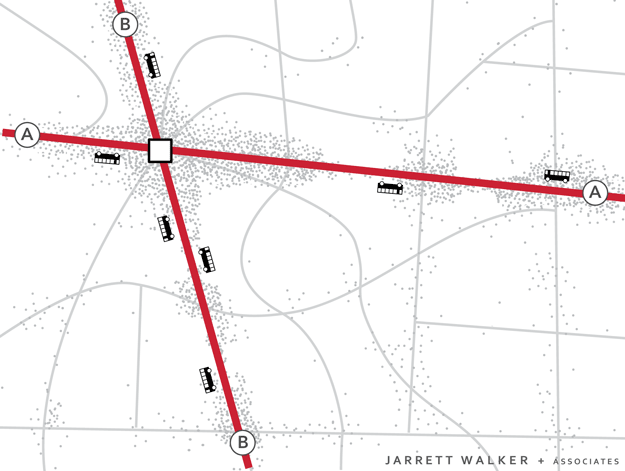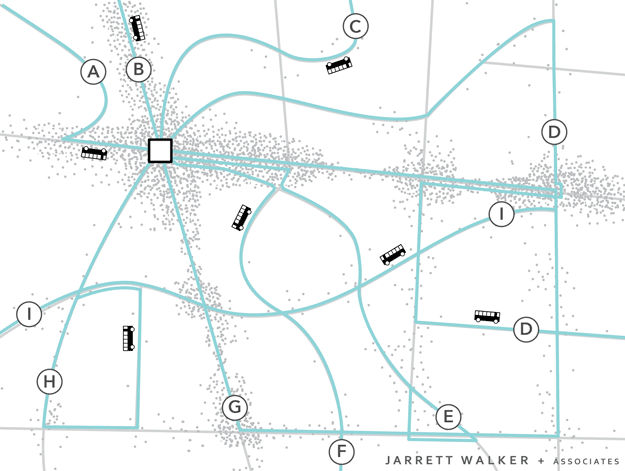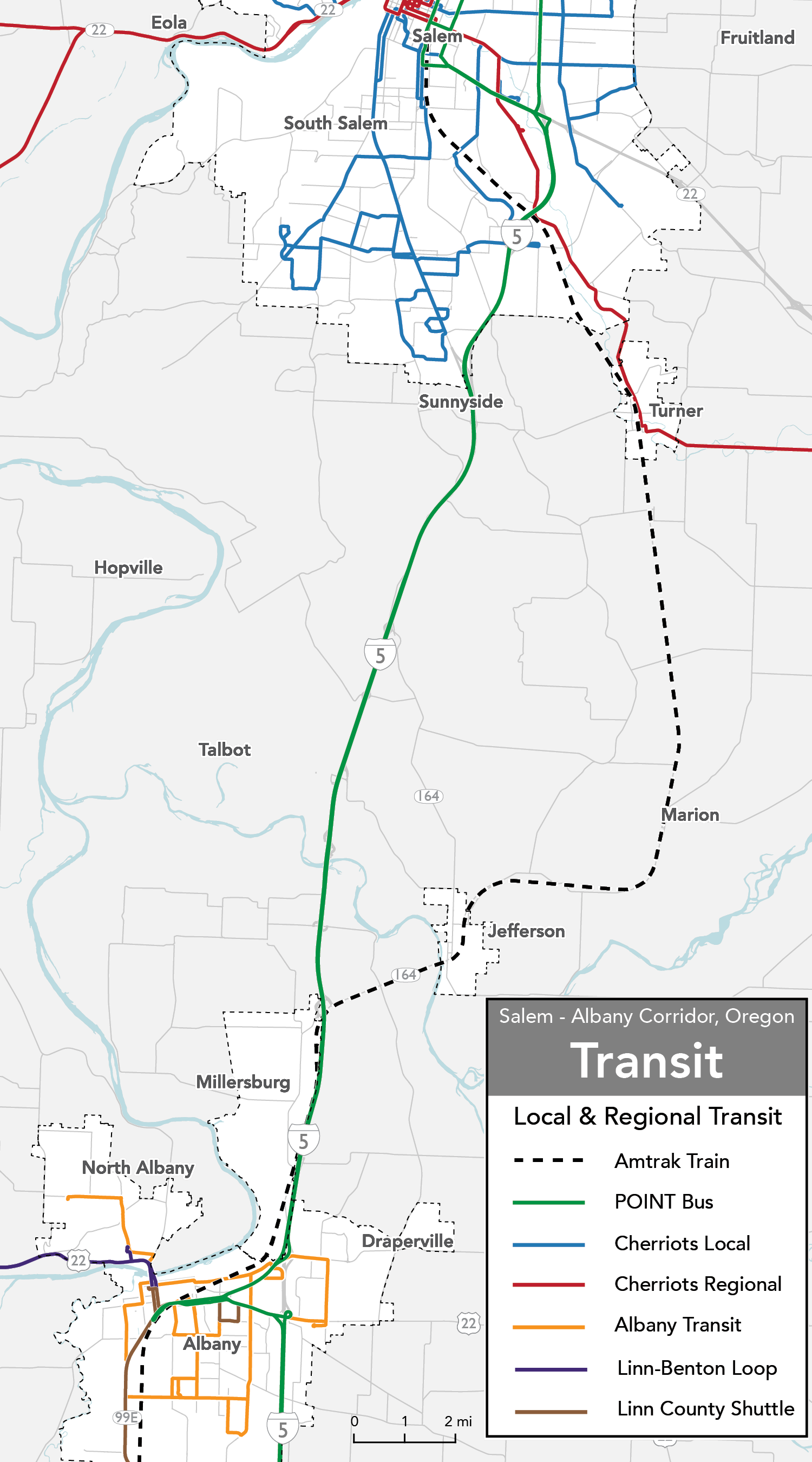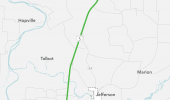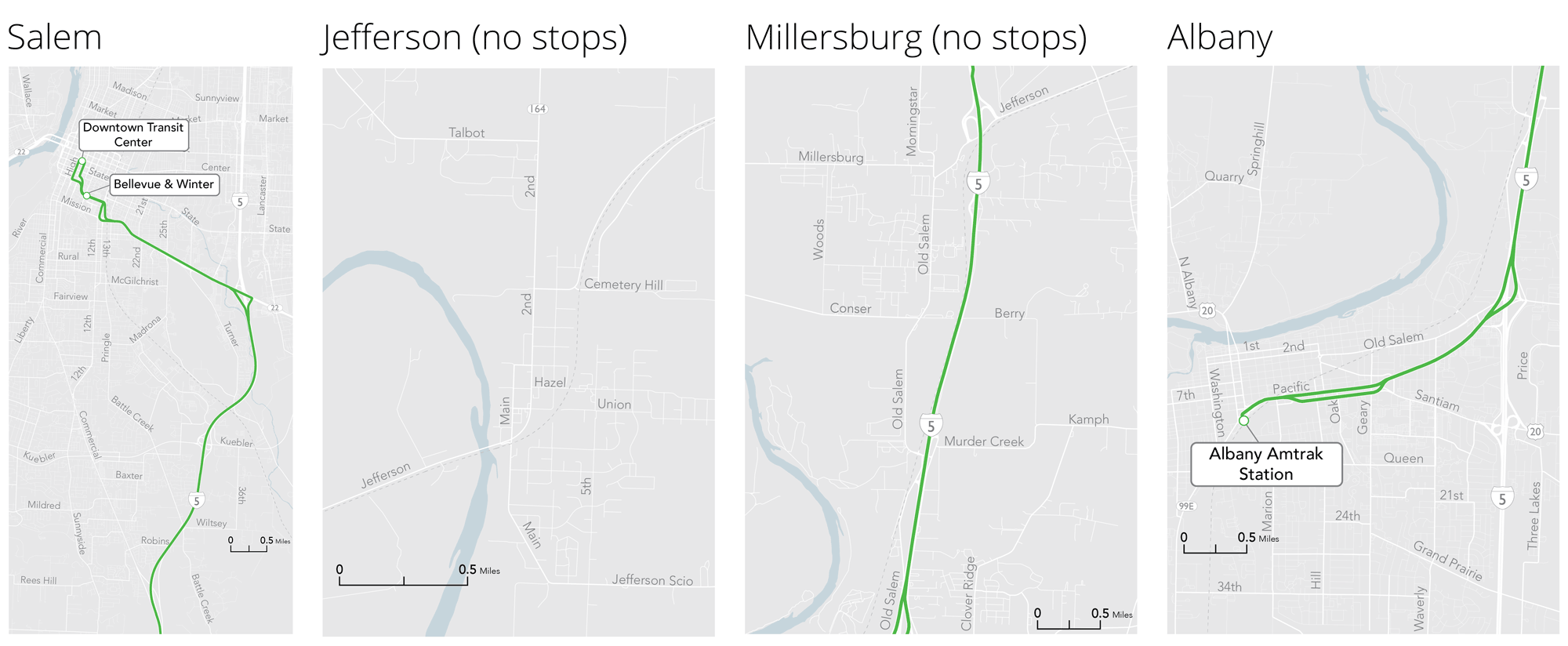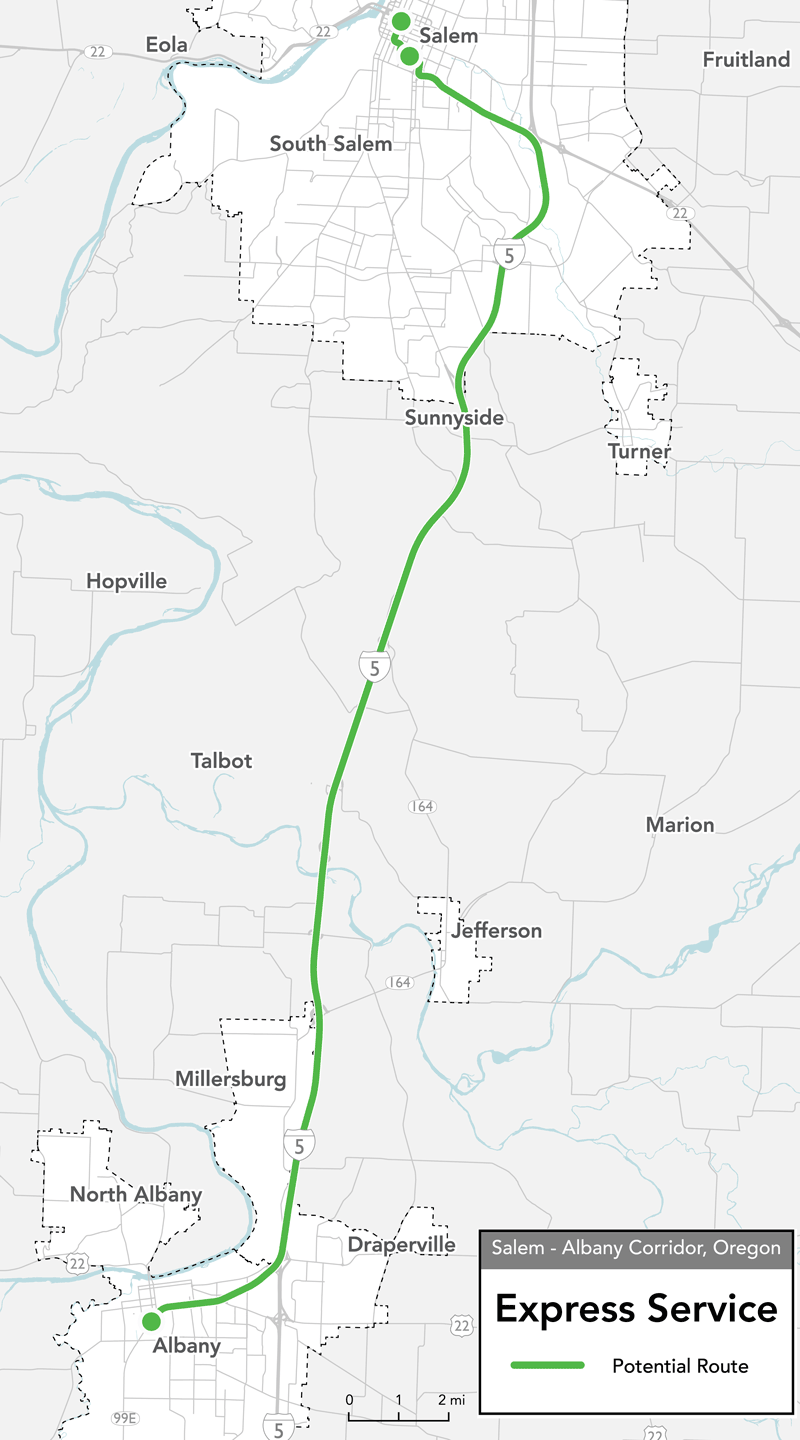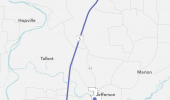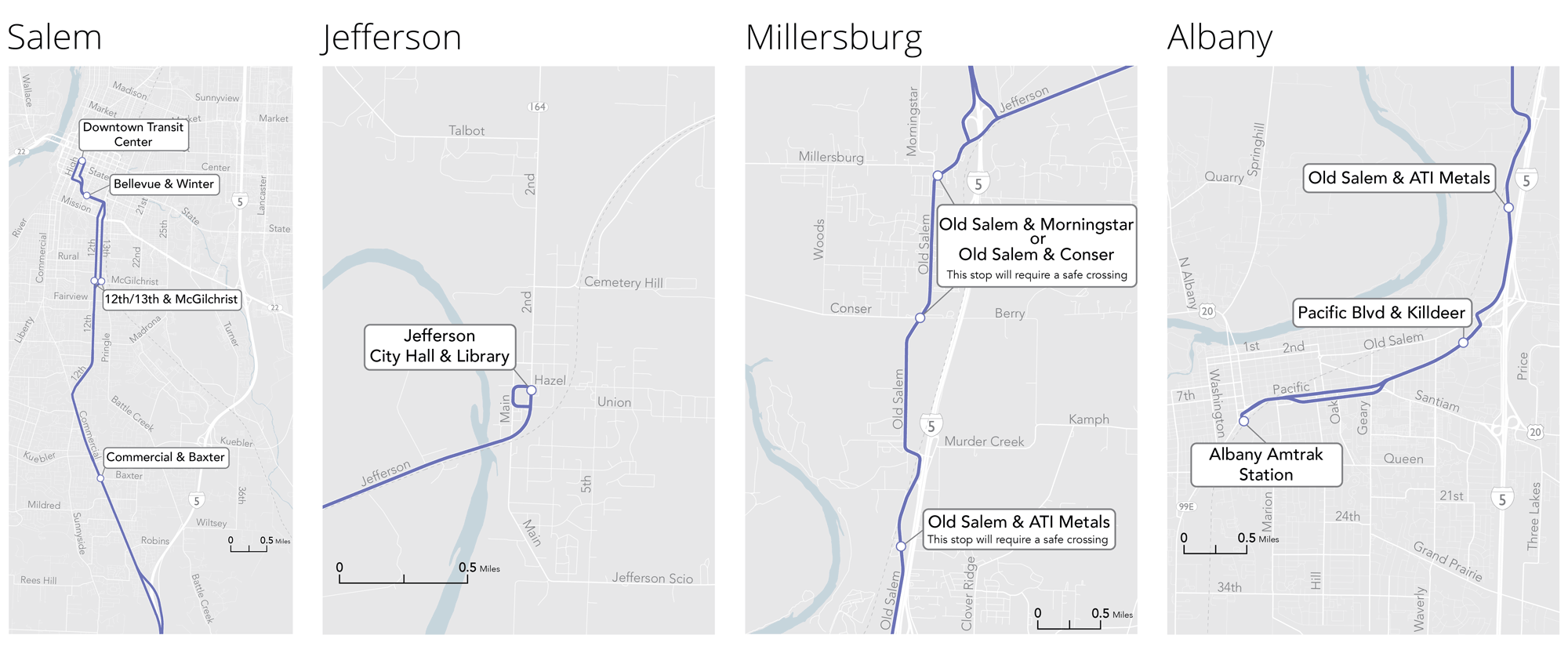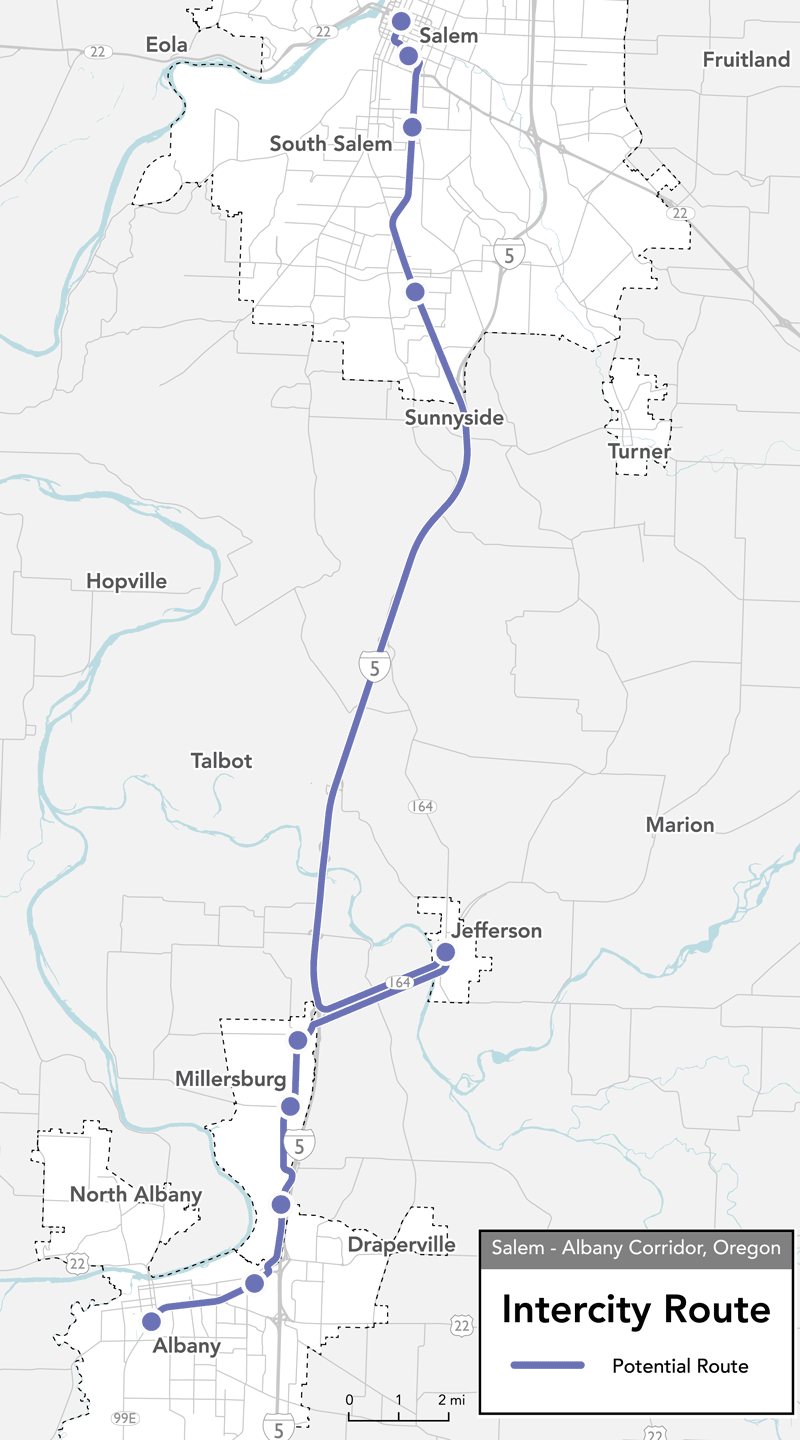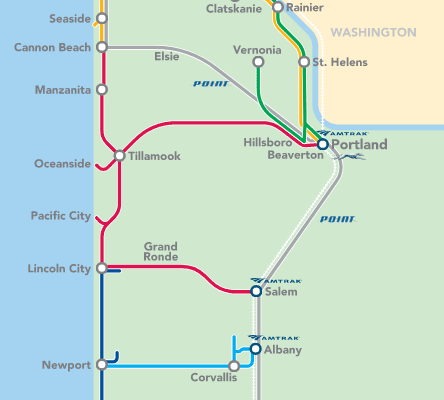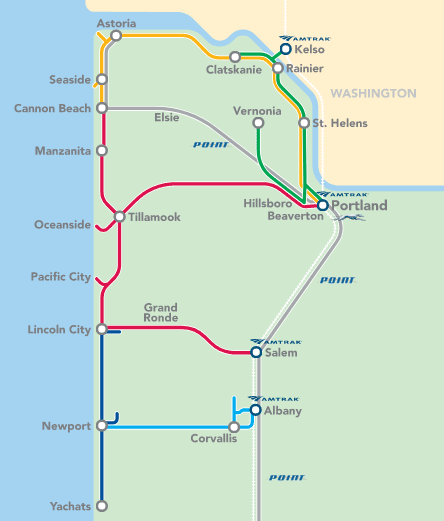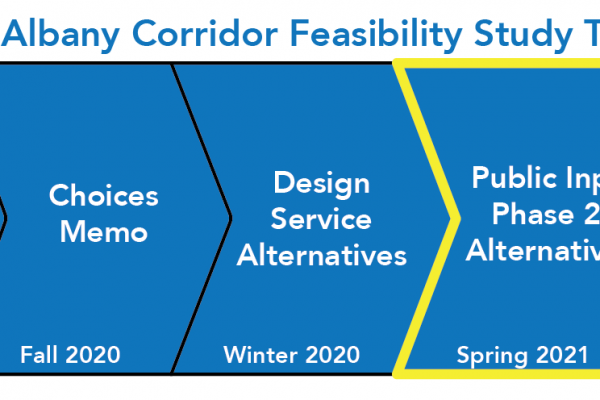Visit the pages on this site using the buttons below or click "Get Started" to move through the information in order.





= Page includes questions or opportunities for comment.
Image gallery contents:
Ridership Graphic
Coverage Graphic
Existing Transit Map
Transit planning beyond county boundaries
Cherriots recent transit plans have identified an affordable connection with Albany as a high priority for further study. While connecting the two urban areas is the focus of this study, service to Millersburg and Jefferson is also being considered.
Your input can influence the plan
As we explore the feasibility of a new route or routes between Salem and Albany, we want to hear about the type of transit route that would best serve your values and needs.
Ridership or Coverage?
One of the first choices we need to consider is whether new service should prioritize ridership or coverage.
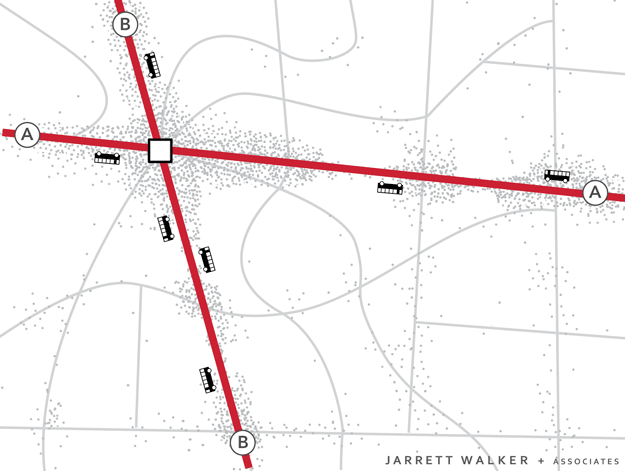
(Click to enlarge.)
We could concentrate service between the cities and towns with the most people. The bus would come more times per day and the routes would be very direct, so more people would probably choose to ride. This has the greatest potential ridership...but some areas would have no service.
We would prioritize high ridership by:
- Targeting the busiest places where the most people are traveling
- Running service that is direct and fast
- Offering the highest frequencies and the shortest waits
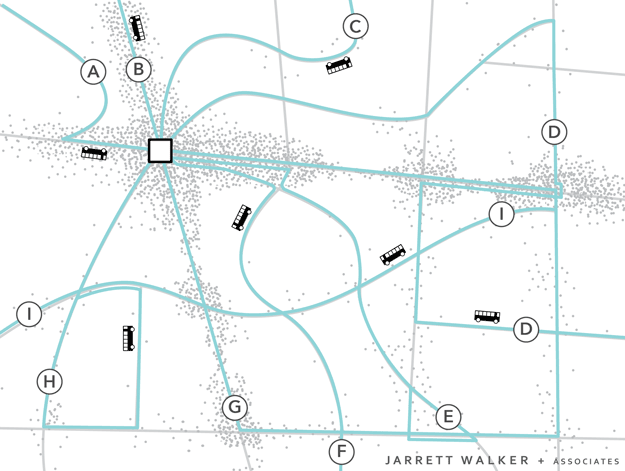
(Click to enlarge.)
We could spread out so that more places have a little bit of service. The bus wouldn’t come as often and routes would be circuitous and less direct. Fewer people would probably choose to ride, even from the biggest cities… but we would have provided more coverage of the area.
We would prioritize coverage by:
- Stopping in smaller towns
- Running a longer and more circuitous route
- Offering service that requires a longer wait
Local and Regional Transit Map
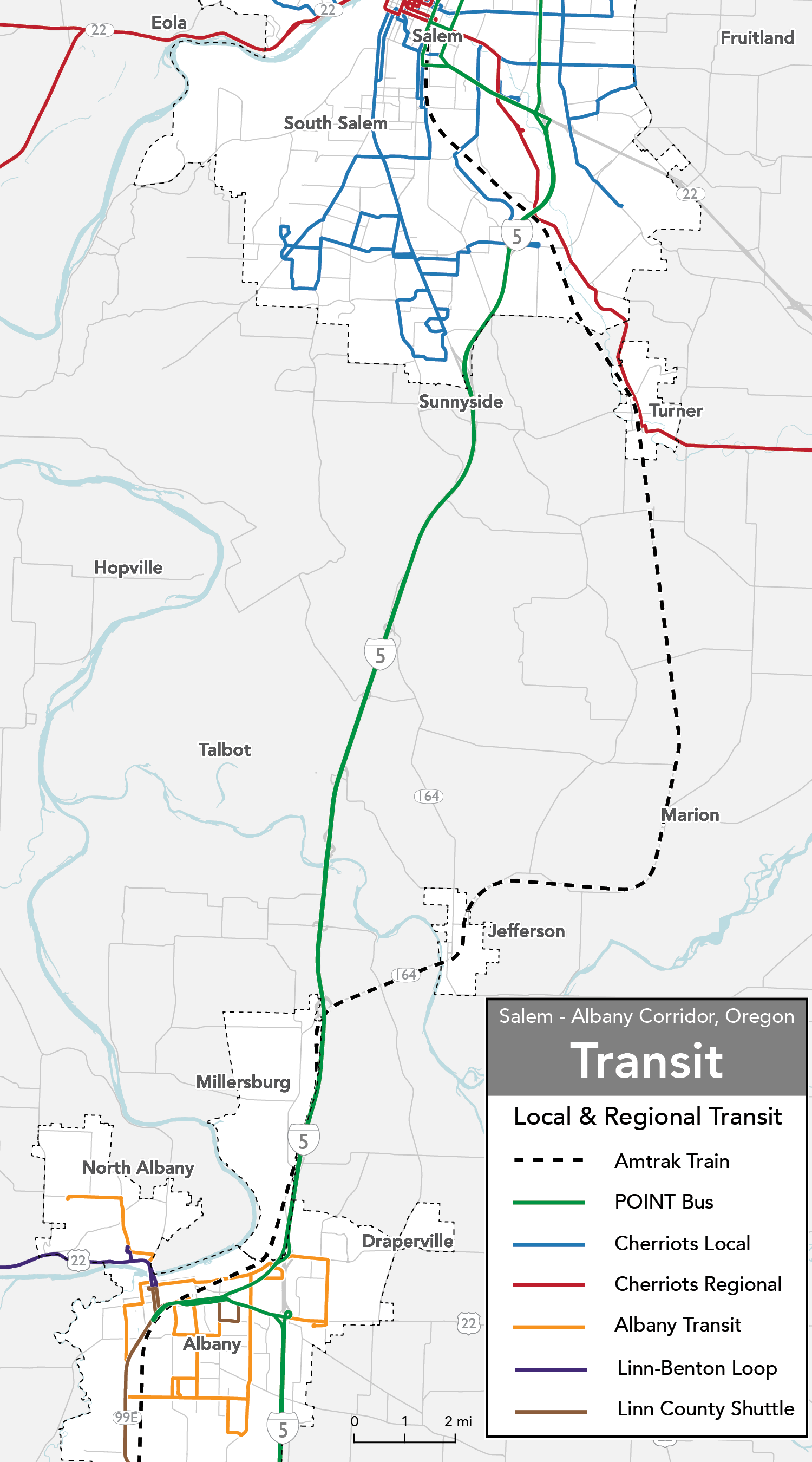
(Click to enlarge.)
Learn More
Existing Conditions and Choices Memo (PDF, 1.1MB) - The Choices report examines the needs and potential goals of a new transit service between Salem and Albany.
Questions
Considerations
When thinking about when transit should operate, there are several considerations to keep in mind:
Rush Hours
Offering the most service at rush hours is sometimes a way to get high ridership. Its success at getting higher ridership often depends on expensive parking, high gas prices and other factors that push people with 9 to 5 jobs to leave their cars at home.
Service Industry Commutes
People who work in retail, restaurant or service jobs tend to commute at all times of day and week, such as early morning, midday, or night, and especially on weekends. People with these jobs tend to have lower incomes and a greater incentive to use transit.
All-Day and All-Week
In the past decade, the U.S. transit agencies that attracted more ridership invested more in all-day, night and weekend service.
Non-Work Trips
Only one in five trips in the U.S. is a commute to work. The other trips are to run errands, go to appointments, shop, visit people and do the other things that make life complete. Those trips happen at all times of day and week.
Questions
- Weekday rush hours Not ranked.
- Weekday middays Not ranked.
- Weekday evenings Not ranked.
- Saturdays Not ranked.
- Sundays Not ranked.
Image gallery contents:
Express Service Stops
Express Service Route
Service Features
Local Stops
The Express would have just a few stops in Salem and downtown Albany with no intermediate stops in South Salem, Jefferson, Millersburg or north of downtown Albany. Having few stops would make it fast and more frequent, which makes it more attractive to people traveling between the big cities.
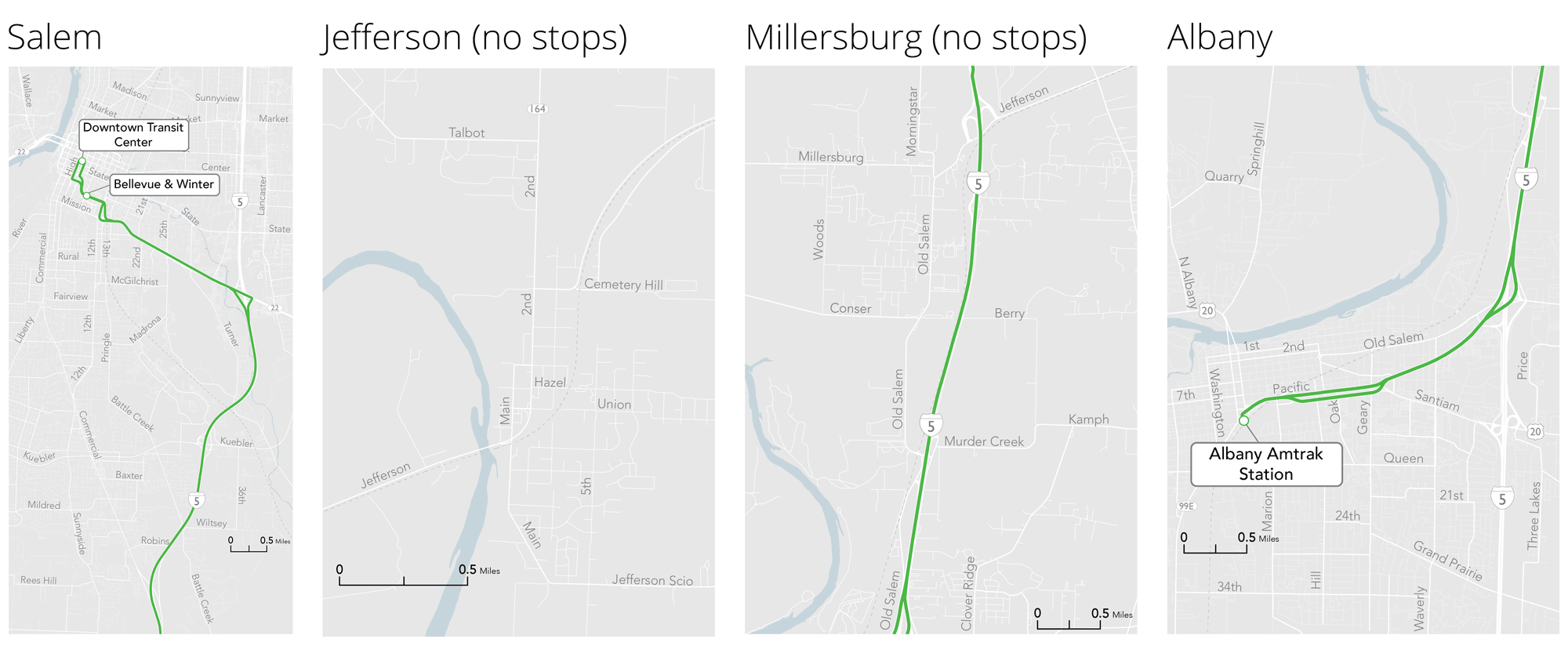
(Click to enlarge.)
Schedule
The Express would offer departures every 30-minutes, but only during rush-hours (7 - 9 am and 5 - 7 pm) on weekdays.
Coverage
This route would stop within 1 mile of 28,000 residents and 44,000 jobs.
Questions
Image gallery contents:
Intercity Route Stops
Intercity Route
Service Features
Local Stops
The Intercity Route would make three stops in Salem, one in Jefferson, one in Millersburg, and two in Albany.
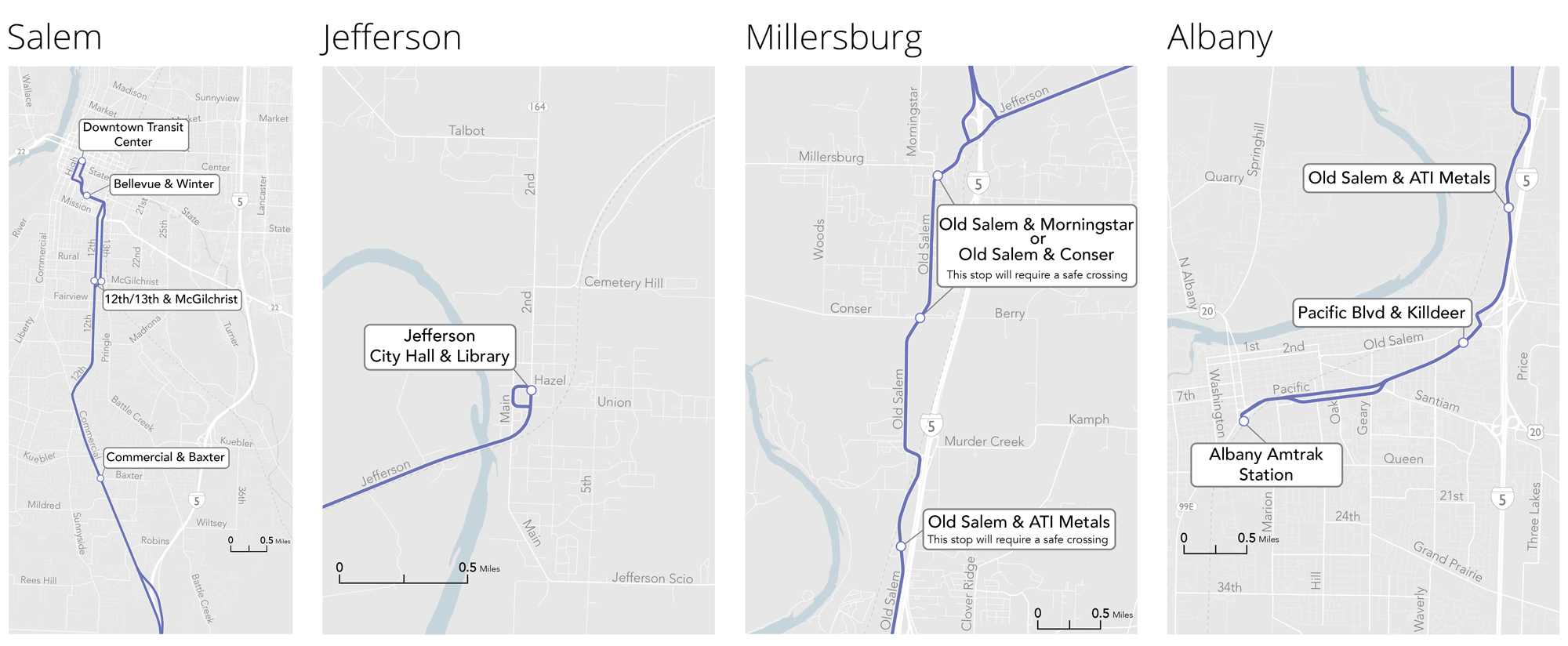
(Click to enlarge.)
Schedule
The Intercity Route would offer departures every two hours, between 7 am and 9 pm on weekdays.
Coverage
This route would get service within 1 mile of 60,000 residents and 60,000 jobs.
Questions
Express Service vs Intercity Route Comparison
Shorter waits at rush hour? | Available at midday and evening? | Faster trip between the busiest places? | More stops? | Smaller towns included? | |
|---|---|---|---|---|---|
| Express Service | Yes | No | Yes | No | No |
| Intercity Route | No | Yes | No | Yes | Yes |
Questions
Image gallery contents:
Regional Connections Map
Regional Connections Map
A new link in the statewide network
Salem and Albany are both places where people can make connections with regional services among the Portland Metro area, the Oregon Coast, the Willamette Valley and beyond. Regional services are used by people traveling for work, for study, to visit friends or family, to access medical services, and more. They can also be used to travel long distances across and around the state, whether people are traveling for fun, to visit family or for essential needs.
A Salem-Albany route would be useful to people traveling between those two cities, but because it would be part of a larger statewide network it could also make other routes more useful.
Questions
Image gallery contents:
Timeline Graphic
Timeline Graphic
Stay Involved
Consider sharing the link to this survey with other people who care about transit in the area.
More Information
For more information, visit www.cherriots.org/salemtoalbany
For project related questions or comments, contact Tracie Heidt (503-235-5881 x 116)
For general information, contact Cherriots:
- info@Cherriots.org
- Customer Service: 503-588-2877
- Administrative Offices: 503-588-2424
Final Questions
(All questions are optional.)
Tell us about you
Please provide your contact information if you would like to be added to the project mailing list to receive project updates.
Demographic Information
Help us understand who is answering this survey! By answering the optional questions below, you can help us know whether this survey has reached a representative cross-section of the community.




